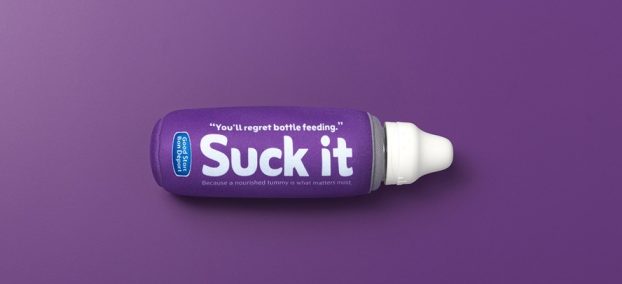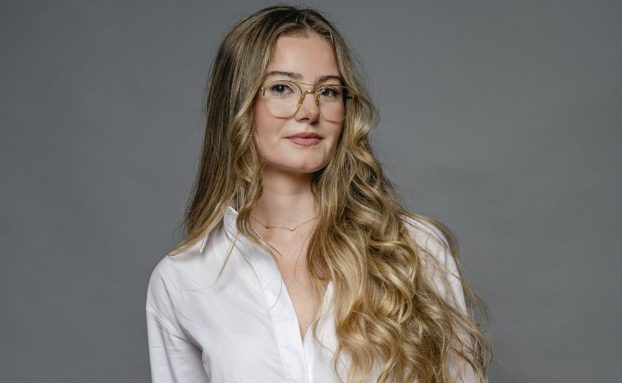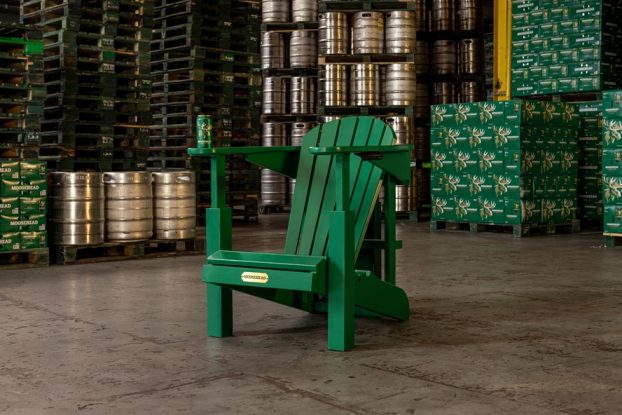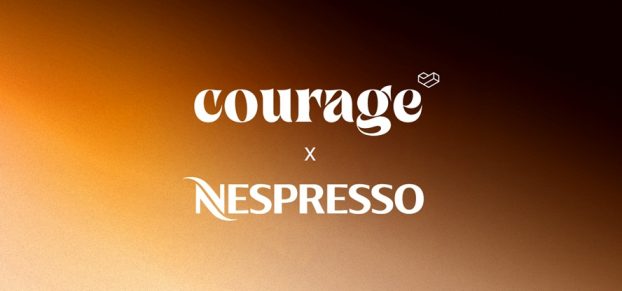Premium programs are like the crack cocaine of marketing. Offer a high-quality gift and sales shoot up, but as soon as the program ends, the buzz is gone, and sales slump.
Many marketers are increasingly looking for ways to get off the hamster wheel and use premiums and incentives in a way that increases customer loyalty and bolsters the image of a brand. Short-term gift-with-purchase programs are being jilted in favour of long-term loyalty initiatives.
Gas stations have already weaned themselves off the low-cost giveaways of old, increasingly making use of loyalty cards and Air Miles schemes, and virtually every major retailer now offers some kind of rewards program.
But the movement from direct giveaways to loyalty doesn’t mean that marketers are using premiums less than they used to: quite the contrary in fact. While traditional advertising budgets continue to fall, spending on premiums and incentives shows no signs of slowing. In the U.S., spending on promotions in 2000 rose 10% to about $368 billion from a year earlier, according to the Promotion Marketing Association. Of that, $26.9 billion was spent on premiums.
And the most recent study by the Montreal-based Promotional Products Association of Canada (PPAC) found that the total estimated sales of promotional products by Canadian distributors in 1998 reached $1.157 billion, up from $808 million in 1984, the date of the previous study. Sales by Canadian suppliers rose from $795 million to $1.163 billion during this time. In addition, 32.6% of all distributors sold premiums in 1998, accounting for 14.7% of their total sales.
‘Incentive use is definitely on the rise,’ says Robert Martin, owner of Paris, Ont.-based fulfilment company Marco Sales & Incentives. ‘We have never handled more contests and sweepstakes in our lives, whereas gift-with-purchase deals are few and far between compared with 10 or 15 years ago.’
Continuity programs are always more effective than a giveaway in Martin’s opinion. He believes the tremendous growth in loyalty programs has been a natural snowball effect, sparked by airlines and banks in the U.S.
‘Unequivocally, virtually every program is growing,’ he says, ‘some by as much as 200% year on year for the last two years.’
However, many marketers still believe that there is something to be said for offering a tangible quality gift, which can surprise the consumer, and build long-term equity through association. Beauty marketers and department stores regularly count on such giveaways to spur sales and traffic, but today’s consumers are only swayed by significant swag.
Sears, for example, recently offered a free watch with the purchase of any Givenchy fragrance worth $55 or more, as a Mother’s Day promo. And The Bay is offering a free bag of cosmetics with any Lancôme purchase of $27 or more.
More interesting though was a Biotherm gift-with-purchase program at Sears last April, which cleverly managed to extend the sales impact by dangling a limited-time coupon for another 30 mL of Biotherm body lotion, redeemable if the customer returned to Sears in May.
‘Everybody has some kind of points program so sometimes an instant reward has more impact,’ says Jae Rang, chair of the PPAC communications committee. Melanie Sibbitt, owner of Toronto-based promotional advertising company, Two Crazy Ladies, agrees. ‘People still like instant gratification,’ she says. ‘The best way to build a long-term relationship is to give a quality product – the quality boosts your name.’
Marketers today are using premiums and incentives in a number of different ways to ensure that they don’t find themselves on a roller-coaster of highs and lows.
Keep ’em coming
This is the strategy frequently employed by QSRs and cereal companies.
McDonald’s, for example, has a long-running history of offering 13 back-to-back Happy Meal giveaways each year, so the consumer always has something to come back for and collect. Figurines ranging from Disney characters to Teeny Beanie Babies have made popular incentives in recent months. The ‘100 years of Disney’ program, which ran in March, saw the chain giving away millions of Disney figurines with a $2.99 Happy Meal.
‘Disney is a rich tradition that really cranks the interest of kids,’ says Rem Langan, Canadian VP and national director of marketing at Toronto-based McDonald’s. ‘Our six-year relationship with Disney gives us a great product to provide consistent incentives with movie tie-ins.’
Still, some programs prove more popular than others, causing sales to soar and later plummet.
‘When a really hot property comes along – like Lion King – it can really drive your sales and it isn’t necessarily something you can plan for because kids can be fickle,’ says Langan, adding that the retailer never suffers a sales drop for long as there will always be another new incentive around the corner.
KFC also offers regular low-value giveaways with a kids’ meal purchase, often with a movie theme. The current Spider-Man promotion, launched across Canada on April 29, has more than met expectations. Giveaways including a Spider-Man figurine with suction cup webs on his hands and feet, as well as a Green Goblin figurine and Spider-Man web projector that straps around the wrist, have almost run out of stock, according to Chris Davies, director of communications at Priszm Brandz, the Toronto-based operator of KFC.
And while beer manufacturers are also famous for offering in-case freebies and mail-away prizes, Labatt is planning to opt out. The brewer is currently giving away golf balls in Bud Light cases in Ontario and the Maritimes, but plans to end its long-running history of in-case premiums by the middle of summer.
‘They are effective in the short-term but don’t really have the ‘hit and stick’ appeal we want,’ explains Nigel Miller, director of PR. ‘They tend to encourage beer drinkers to shop around rather than staying with our brand.’
Instead Labatt is in the process of developing a new loyalty-building strategy, although Miller declines to give details. He adds that a loyalty card would be an unlikely proposition, however, due to regulations that prevent manufacturers of alcoholic beverages from adopting such a strategy.
Gather leads for the future
Some programs allow marketers to extend the premium high by building a database of consumers to target with future incentives.
Coca-Cola Canada, for example, has just launched a Web auction, allowing consumers to bid for a huge range of high-value prizes. A database gathered from a promo last summer was used to contact 20,000 Coke fans via e-mail to let them know about the auction.
‘As soon as the e-mail went out, people started bidding online,’ says Arlene Lebovic, national brands promotion manager at Coke. Internet promotions provide an ideal means for building loyalty, Lebovic says. ‘It’s where our consumers are. It’s more active and involves more people than a simple giveaway.’
The loyalty option
Marketers are increasingly shying away from the costly and time-consuming practice of offering occasional freebies in favour of rewarding customers with a loyalty program.
‘There is no question that loyalty programs are far more valuable to consumers and to retailers than a free gift,’ says Arthur Konviser, VP of public affairs at Toronto-based Shoppers Drug Mart. ‘With a gift there is always the risk of running out and disappointing people, and it is impossible to offer a gift that is suitable for every recipient. You can do a lot more when you can control your own program.’
He says that Shoppers has enjoyed a marked sales increase since kicking off its Optimum Card loyalty program in 2000, and he expects to boost loyalty further still with a CIBC Shoppers Optimum Visa card launching this month.
Aeroplan is also adding a new dimension to its services. The Aeroplan Business Incentives program is a re-branded version of the company’s former Appreciation program, with additional Web tools for employers to set up promotions and contests. The scheme allows employers to buy air miles and use them to motivate employees, incite repeat business and attract new clients.
‘We have done a lot of research with customers and employers that shows that the preferred gift is always free travel,’ says Stephane Leduc, head of brand management and marketing communications at Montreal-based Aeroplan. ‘We have put it into a package for employers which we believe will help them and us to leverage long-term loyalty.’
Around 100 companies were involved in last year’s Appreciation program, and Leduc expects that figure to double or triple with the launch of the new scheme.
Yet another loyalty program, this one involving a fundraising program for sports associations, will launch in Ontario on June 18. Through the Boomerang Card scheme, (developed by the Canadian Sports Network) shoppers at participating retailers will accumulate cash savings for every purchase made. Half of the rebate goes to the cardholder and the other half goes to the sporting association they belong to. After the initial launch, the privately-owned, Toronto-based Boomerang Card plans to extend the card to retailers across the rest of Canada and eventually internationally.
American Express offers a number of reward vehicles to consumers and to corporate chains. Its latest vehicle, the ‘Be My Guest’ Card, allows consumers to gather points to be spent in a store or saved over a period of time.
‘Our biggest selling point is giving buyers and participants complete flexibility,’ says Stevi Hanson, account VP at American Express Incentive Services. Corporate customers are able to use the Encompass incentive card, for one example, with the branding of their own company, to reward employees for meeting performance objectives.
Finally, Second Cup is planning to go high-tech with its Club Card program in the near future with a more cost-effective electronic card system. The retailer will use this in tandem with extensive in-café free sampling, contests and promotions to maintain customer retention.
Borrowing equity with
co-branded premiums
This is another McDonald’s ploy. In addition to Disney, the restaurant chain also boasts long-running relationships with the Canadian Olympic Association, NHL and Hockey Canada. ‘Through these relationships we offer premiums like hockey pucks and hockey cards which skew towards the teens and older audience,’ says Langan.
Coca-Cola Canada also has a history of developing relationships with well-known brands like the NHL and Canadian Olympic Association.
‘We choose brands that align well with us and contribute positively to our equity in the long term,’ says Coke’s Lebovic. For instance, a Harry Potter promotion helped to boost sales last October, while an Olympic promo offered consumers an in-pack hockey coin bearing an image of a hockey player.
Coke’s on-pack giveaways usually tie in with a larger promotion, designed to give the brand a lift at certain times of year, Lebovic says. Although most promos are based on a short-term strategy intended to create a brief sales hike, Lebovic adds: ‘If a promo is well-positioned for the short term, it should build towards your equity but not necessarily have longevity.’
Building loyalty can be challenging for a car rental company – where customers generally regard the service as a commodity – but Budget-Rent-A-Car has taken steps to offer something beyond the basics by partnering with pre-eminent brands like Roots and the Canadian Olympic Association.
The company also offers a loyalty scheme called Perfect Drive, through which consumers collect points to redeem on goods such as Roots merchandise. ‘This creates a point of difference for us and hopefully makes people come back to us again,’ says Jonathan Ison, VP of marketing and business development at the Toronto-based company.
‘I think corporations and brands are right to take the loyalty card approach these days,’ concludes Gord Byers, president at Toronto-based MacLaren Momentum, the promotions division of MacLaren McCann. ‘Trying to keep people in your stable is easier to do and more cost-effective with those types of programs. Short-term giveaways offer conquest business, which can be great, but it is very expensive and doesn’t last.’






















